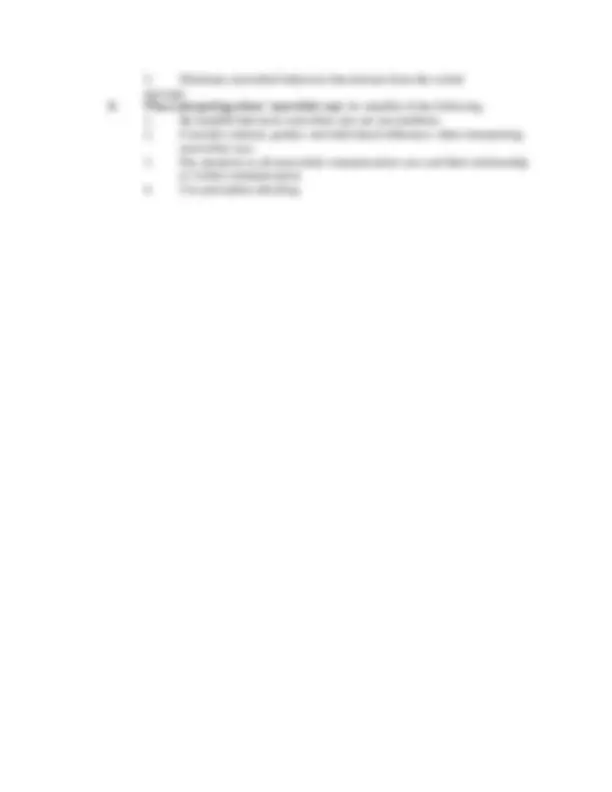



Study with the several resources on Docsity

Earn points by helping other students or get them with a premium plan


Prepare for your exams
Study with the several resources on Docsity

Earn points to download
Earn points by helping other students or get them with a premium plan
Community
Ask the community for help and clear up your study doubts
Discover the best universities in your country according to Docsity users
Free resources
Download our free guides on studying techniques, anxiety management strategies, and thesis advice from Docsity tutors
1. Nonverbal communication provides information by repeating, substituting for, emphasizing, or contradicting our verbal messages. 2. Nonverbal communication ...
Typology: Slides
1 / 3

This page cannot be seen from the preview
Don't miss anything!


Chapter 5 Outline
(Italicized words are key words)
I. Nonverbal communication , commonly used to describe all human communication events that transcend spoken or written words, has many characteristics and functions. A. There are five characteristics of nonverbal communication.
a. Spontaneous touch is touch that is automatic and subconscious. b. Ritualized touch is touch that is scripted and not spontaneous. c. Task-related touch is touch used to perform an unemotional function. B. Paralanguage is communication through nonverbal sounds; it is comprised of five vocal characteristics, including pitch, volume, rate, quality, and intonation, which can complement or contradict meaning, while vocal interferences can disrupt messages.